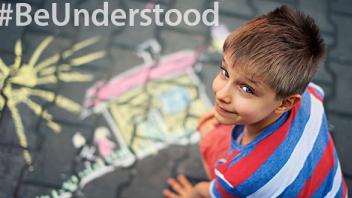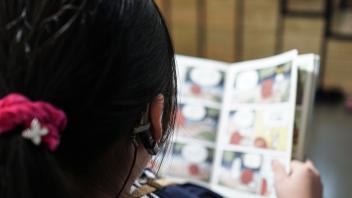What is ADHD?
ADHD — attention-deficit hyperactivity disorder — is a neurodevelopmental disorder that affects children and adults. Children with ADHD have trouble paying attention, controlling impulsive behaviors, or are overly active. These symptoms can interfere with their school performance and daily life.
Before 1994, the terms ADD (attention deficit disorder) and ADHD were used to distinguish children with hyperactivity and those without. The term ADD is no longer used, and everyone with this disorder now falls under the catch-all category of ADHD.
Children with ADHD may be very energetic and restless. Some may have trouble sitting still, staying quiet, or waiting for their turn. They may act on impulse without thinking about the consequences. However not all children with ADHD are hyperactive. Some children may be shy, daydreamy, or easily distracted. They have trouble focusing and organizing tasks, following directions, remaining on-task, or remembering details.
The American Psychological Association (APA) reported that approximately 8.4% of children and 2.5% of adults have ADHD. The diagnosis rate is higher for boys (13%) than girls (6%) and varies by race and ethnicity.
School personnel do not diagnose or treat ADHD. If a parent suspects a student may have ADHD, they should contact their pediatrician or a mental health provider. Healthcare providers use the guidelines in the American Psychiatric Association’s Diagnostic and Statistical Manual, Fifth edition to help diagnose ADHD. They will look at the whole child to assess whether a child’s symptoms are persistent and likely to interfere with daily life.
Symptoms of ADHD
The table below lists common symptoms of ADHD. Your health care provider will consider the age of onset, the frequency and duration of symptoms and whether any other condition might explain your child’s behaviors.
| Inattention | Hyperactivity/Impulsivity |
|---|---|
|
|
Students diagnosed with ADHD fit into one of 3 categories:
| Category of ADHD | What it means |
|---|---|
| ADHD, predominantly inattentive | Symptoms of inattention were present but not hyperactivity/impulsivity for at least 6 months. |
| ADHD, predominantly hyperactive/impulsive | Symptoms of hyperactivity/impulsivity were present but not inattention for at least 6 months. |
| ADHD, combined (i.e., both inattention and hyperactive/impulsive behaviors) | Symptoms of both inattention and hyperactivity-impulsivity were present for the past 6 months. |
Watch this video from the American Psychological Association about ADHD.
Reading and ADHD
Reading difficulties and ADHD tend to occur together, but they are not the same thing. Children with significant reading problems, such as dyslexia, are due to a language issue or how their brains process oral language and written words.
Children with ADHD may have a more difficult time attending to printed letters and words or have trouble organizing and focusing while reading. Reading requires you to remember what you have read before. You must pay attention to what the text is saying so you can comprehend. Having both dyslexia and ADHD can make learning to read more challenging.
Supporting reading in the classroom
Teachers can adjust classroom reading instruction to help students with ADHD be more successful. Here are a few tips you can share with your students:
- Choose books that are both interesting and have appropriate levels of challenge.
- Provide a quiet and comfortable place to read that’s free of distractions.
- Break the texts apart into shorter chunks. Stop frequently to review what was read.
- Take frequent stretch breaks.
- Annotate by writing notes in margins.
- Teach how to underline or highlight key words or phrases.
- Provide graphic organizers to help organize thinking about the text.
- Develop and use a set routine or set of questions at reading stopping points, for example: Who? What did they do? How does this connect to what we read before?
- Retell or summarize what you read in your own words.
- Use text-to-speech software or read-aloud to listen if it helps you focus better.
- Set a purpose for reading. Turn and talk to a partner about what was read to clarify thinking and remember key information.
- Teach students one or two repair strategies, for example: “If reading breaks down, I can… go back and reread the sentence. Try reading it aloud.”
There are effective treatments available for ADHD, such as medication, behavioral therapy, coaching, and support groups. If your child has ADHD, it is important to talk to a mental health professional who can diagnose and develop a treatment plan to support daily life at home and school.
Learn more about ADHD
In this video from Understood, Thomas E. Brown, PhD, discusses ADHD diagnosis, ADHD symptoms, available ADHD treatment options, and ADHD medication.
Learning Disabilities
Attention-Deficit/Hyperactivity Disorder (AD/HD)
Assessment and Evaluation
Who Can Diagnose LD and/or ADHD
Reading and the Brain
7 Things to Know About the 1 in 5 with Learning and Attention Issues
Learning Disabilities
What Are Classrooms Like for Students with Learning Disabilities?
Learning Disabilities
Organizational Problems and the Beginning of the School Year
Sound It Out












